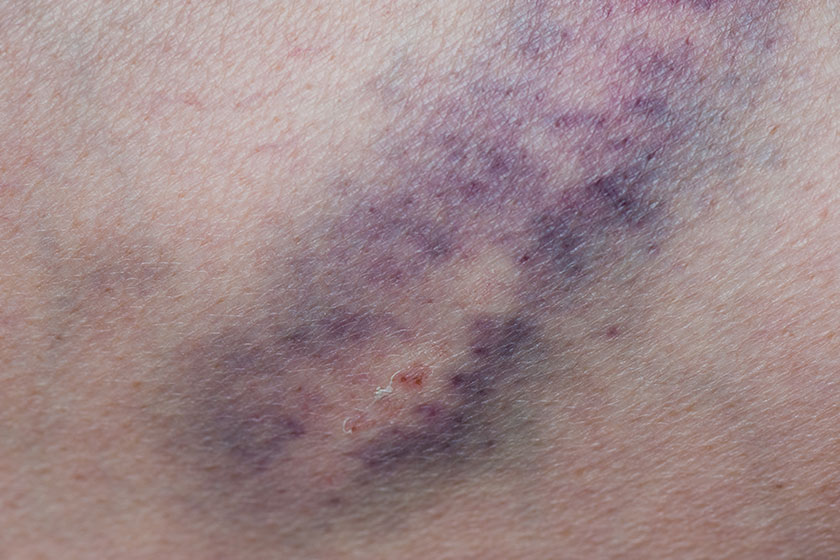Embracing life in a retirement community is not only about enjoying the sunset years in a comfortable and safe environment. It’s also about discovering new interests, gaining a sense of belonging, and living a vibrant, engaging life. The amenities provided at such communities are specifically tailored to cater to varying individual needs and preferences and to promote physical, emotional, and mental well-being among their residents.
Thinning Skin and Reduced Elasticity
As we age, it’s standard for our skin to thin and lose some of its elasticity. It’s a natural part of growing older. When you combine this with reduced fat padding underneath the skin, the protective layer, once preventing us from harmful knocks or bumps, is no longer as effective. For residents in a retirement community, even a light bump against furniture can result in a bruise.
It’s not just external factors that cause thinning skin and reduced elasticity. Internal factors, such as the body producing less collagen— a protein that provides structure to the skin—can also have significant effects. With less collagen, the skin loses its ability to bounce back, and small effects can cause the skin to break, leading to more frequent bruising.
Medication Side Effects
Often medications have side effects that can lead to easy bruising in our elderly loved ones. Some drugs thin the blood and decrease its ability to clot, increasing the risk of bruising. For example, commonly prescribed medications like aspirin and anticoagulants can make bruising more likely for residents in a retirement community.
Likewise, some other medications used for heart problems or high cholesterol also have similar side effects. Corticosteroids, used to treat a range of conditions, can thin the skin and increase the risk of skin bruising. Therefore, it becomes vital for team members to be aware of these side effects and monitor the residents closely for any signs of excessive bruising.
Increased Fragility of Blood Vessels
Another reason can be attributed to aging itself; as we grow older, our blood vessels lose their elasticity and become more prone to rupture or tear from minor impacts. This change can lead to residents often sprouting blue and purple bruises from minor incidents.
The fragility extends to even daily events such as coughing or even sneezing, which can put additional stress on the blood vessels, especially around the eyes. Family members should remain informed of these conditions to provide the appropriate help and manage the situation if such instances occur.
Nutritional Deficiencies
Proper nutrition is fundamental to maintaining good health, especially for the elderly. Sometimes, nutritional deficiencies can increase the risk of skin bruising in elderly. Vitamin C and K are vital for blood clotting and collagen production. When our loved ones don’t get enough of these vitamins in their diet or if their bodies aren’t absorbing nutrients properly, it can result in frequent bruising.
This situation is quite typical in the retirement community, as the elderly often struggle with changing dietary needs, reduced appetites, or medical conditions affecting nutrient absorption. It becomes equally important for team members and family to ensure that elderly residents are maintaining a balanced diet filled with nutrient-rich foods. Adequate vitamin K and C intake helps strengthen blood vessels and replenish the skin’s structure.
Underlying Health Conditions
Health conditions that the elderly may be dealing with can also contribute to frequent bruising. Diseases that affect clotting or disrupt blood’s normal functioning can often increase bruise susceptibility. Conditions like diabetes or kidney disease can make the skin susceptible to tearing and bruising, and diseases like leukemia or hemophilia can impact blood clotting and lead to easy bruising.
The importance of regular visits to the doctor and frequent health check-ups cannot be overstated within the retirement community. A sudden change in bruising patterns or an increase in the number of bruises might indicate an underlying health condition requiring medical attention. Team members need to be vigilant in observing any unusual increase in bruising among the residents.
Reduced Fat Layer Under the Skin
As we age, we often tend to lose the fat layer that once resided under our skin. This fat layer serves as a cushion, protecting our blood vessels from damage. However, with the advancing age, the disappearance of this fat layer can increase the risk of blood vessels rupturing even due to minor impacts, leading to easy skin bruising in elderly.
This loss of a protective layer can have significant impacts within a retirement community, where even everyday activities can potentially lead to bruises. A vital role of the team members is to ensure the physical environment is as safe as possible to prevent unnecessary incidents. Also, it’s integral for them to inform the family members about such changes, allowing them to understand and better care for their elderly loved ones.
Through understanding and addressing these factors, we can create a safer and more attentive environment for our elderly loved ones in retirement communities. Remember, knowledge and awareness form the backbone of good health and well-being.
Discover All We Have to Offer
The road to a fulfilling retirement begins with choosing the right community for you and your loved ones. It’s time to explore the unparalleled living experience that our retirement community offers. Combining an idyllic location with an array of high-quality amenities, talented team members, and a diverse range of social engagements, our community is the perfect place to cultivate a new chapter in your life. Don’t wait; come and see for yourself why we’re the best choice for your golden years. Schedule a visit today, and let us give you a tour of your future community.







